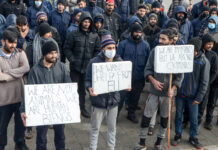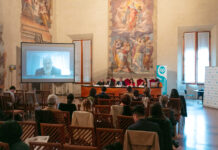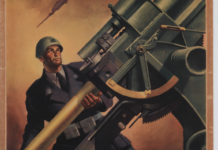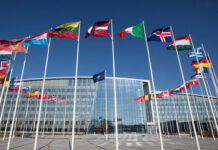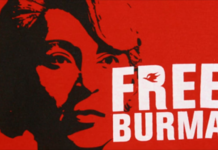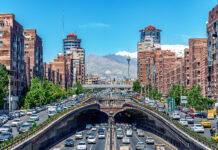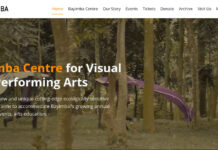Latest Developments
On May 20, 2023, in the capital Kinshasa, thousands of people protest against the high cost of living, the first irregularities in the organization of the presidential elections scheduled for December 20, and the insecurity in the country. Law enforcement intervenes with violent repression. Human Rights Watch reports the arrest of dozens of protesters and injuries to 30. The NGO denounces the partiality of the institutions in identifying and punishing police officers guilty of excessive violence.
Civil society, the Catholic Church, the EU, the USA, and the UN Monusco mission condemn the events and demand respect for civil liberties before the elections. The Congolese government justifies itself by stating that the demonstration was authorized in a different area from where it took place. While Minister for Human Rights Puela joins the condemnation of the international community, President Tshisekedi congratulates the security forces for dispersing the protesters. Many seem to think that the President, seeking re-election, seeks legitimacy for violence against political opponents.
Between May 4 and 5, 2023, devastating floods and consequent landslides engulf the territory of Kalehe in the South Kivu province. They cause hundreds of deaths and missing persons, about 150 injured, and the destruction of villages and infrastructure. The intervention team of Doctors Without Borders reports that there are two urgencies: treating severely injured and preventing the outbreak of pandemics, both challenging operations given the level of devastation caused by the environmental catastrophe. In April 2023, MSF reports a severe humanitarian crisis in North Kivu, an eastern province of the country.
The situation is exacerbated by the resumption of activities by the armed group Movement 23 March (M23). In February 2023, Amnesty International reports that between November 21 and 30, 2022, M23 members killed about 20 men and raped over 60 women and girls in Kishishe (North Kivu). According to information collected by the NGO, the motive for the crimes is to punish and humiliate civilians suspected of supporting various armed groups, including the Democratic Forces for the Liberation of Rwanda.
Rwanda itself is said to be among the main financiers of M23, with the aim of using it as a puppet to control the resources of the North Kivu territory. In January 2023, a rudimentary bomb killed at least 17 people and injured about 39 in the Pentecostal church of Kasindi, in North Kivu. The Government attributes responsibility to rebels of the Allied Democratic Forces, close to Islamic extremism. ISIS later claims the attack.
What are they fighting for?
The Democratic Republic of Congo has often been described as a “geological scandal” due to the enormous abundance of raw materials in its soil and subsoil: diamonds, coltan, gold, cobalt, copper, niobium, oil, precious woods, arable land, biodiversity, and water resources.
This extreme wealth has always aroused the most unrestrained appetites. The conflict that has plagued the country for over 25 years can be summarized as a tangle of greed, corruption, illegality, mismanagement, and ethnic tensions. At the center of it all is the struggle for control of the rich territory, particularly in the East, bordering Burundi, Rwanda, and Uganda. The DRC has less than optimal relations with these three neighboring states.
In the background, the great powers are at play: the United States, France, and China. Since 1994, the country has seen an uninterrupted series of specific conflicts, some of which originated during the Mobutu years (1965-1997).
There are constant clashes in the regions of Kasai, Ituri, North Kivu, South Kivu, and Katanga. The actors involved include the authorities and over a hundred-armed movements active in the country.
Country overview
The Democratic Republic of Congo (called Zaire from 1971 to 1997) gained independence from Belgium in 1960, ceasing to be the personal colony of King Leopold II of Belgium. It is the most populous Francophone country in the world. There are over 200 ethnic groups living there. Together, the Mongo, Luba, Congo (Bantu), and Mangbetu-Azande peoples represent about 45% of the population.
Since 1994, the country has been shaken by civil wars and conflicts with neighboring states. The climate is one of widespread violence, which, along with the looting of resources and high levels of corruption, constantly worsens the living conditions of the population. The socio-economic state of prostration in the country is largely a consequence of the policies of dictator Mobutu Sese Seko Kuku, who fled Kinshasa in 1997: from 1971, he used the country as his personal source of income, amassing immense private fortunes at the expense of the public treasury.
The years following the end of the Kuku era did not bring improvement. The arrival of Laurent Desire Kabila as president in 1997 resulted in only one year of peace. Then, the rupture of the alliance with Rwanda and Uganda triggered the Congolese conflict (1998-2003), considered the first “African world war” due to the involvement of 8 different armies and the interference of many countries and Western multinationals.
The conflict resulted in the division of the DRC into four macro-regions, reunified only with its end. According to estimates, the war caused between 4 and 5.5 million deaths. The end of the clashes does not translate into peace. At alternating times, Katanga, Upper and Lower Kivu, Ituri, and the four Kasai provinces (i.e., the richest territories in raw materials) are marked by “low-intensity” conflicts: local-scale clashes marked by indiscriminate violence.
On December 30, 2018, the current President Felix Tshisekedi was elected to office. However, his party does not have the numbers in parliament to govern: Tshisekedi must form an alliance with predecessor Joseph Kabila. According to many, this agreement blocks any possibility of change in the country.
At the end of 2020, the majority collapsed, leading to a long government crisis. Excluding Kabila, the new majority coalition (called the “Sacred Union of the Nation”) includes two opposition parties. But the real end of the political earthquake coincides with the appointment of the new government in April 2022. Nothing remains of the system built by Kabila: Tshisekedi managed to dismantle it, as his slogan proclaimed.
At the end of the first Council of Ministers of the new Executive (held overnight between April 30 and May 1), Tshisekedi declared a state of siege in the two most insecure provinces of the country, Ituri and North Kivu. It is the first attempt ever to use Article 85 of the Congolese Constitution (which allows a state of siege when “serious circumstances threaten the independence or integrity of the national territory”), but it does not improve the situation in the two regions.
From May 2022, clashes resumed between the army and the March 23 Movement, one of the most violent armed groups in North Kivu. Attempts to establish a dialogue between central authorities and rebel movements through the mediation of international actors (such as Kenya and Angola) have not worked. Kinshasa accuses Rwanda of subsidizing militants, especially M23. Kigali denies this.
Meanwhile, a document sent by the UN to the Congolese Ministry of Defense in February 2022 accuses Congolese soldiers of committing at least 231 human rights violations in North Kivu. The brutality of the weapons fuels the humanitarian crisis, which is constant in the DRC. It is estimated that, in the last 12 months, armed clashes have caused 1 million internally displaced persons.
The UN estimates that in North Kivu alone, there are 2.5 million internally displaced persons. Access to medical care remains difficult due to logistical and economic reasons. The difficulty in cultivating fields and obtaining supplies raises food prices, generating food insecurity: according to the UN, 3 million residents of North Kivu are at risk of malnutrition. According to the World Bank, in 2022, 70% of Congolese lived below the poverty line. The issue of population growth is added: estimates say that by 2050, the population will increase by 121%. This poses an additional stress test for the country.
Key figure or organization –
Kama Sywor Kamanda
Kama Sywor Kamanda is a Congolese writer and poet. His father, a settler of Egyptian origin, supported the independence of Southern Kasai. Due to this affiliation and the onset of the civil war, his family sought refuge in the capital Kinshasa. In 1967, Kamanda began writing his first stories, later moving on to poetry as well. In 1970, he participated in the founding of the Union of Congolese Writers. In 1977, he was forced to leave his country due to his political activities. He traveled through Europe and settled in Luxembourg. In 2005, the Conseil international d’études francophones awarded him the prestigious Maurice-Cagnon Certificate of Honor for his unique contribution to world literature in the French language. His works have been translated into numerous languages, including Italian.
FOCUS 1 – Radio mania
In the Democratic Republic of Congo, radio is the most widespread means of communication. The government manages some stations. The UN mission Monusco and the NGO Fondation Hirondelle, based in Switzerland, manage Radio Okapi with the aim of showcasing the various political voices in the country. It employs mostly Congolese staff. Radio France International is the main news channel. The BBC broadcasts on FM in some cities.
FOCUS 2 – Congolese art
“Congo art” does not refer solely to art produced in the Democratic Republic of the Congo, but also to that from a vast area including the DRC, Congo, Gabon, southern Cameroon, and northern Angola. Artistic expressions from these areas share stylistic affinities, motivations, and language. Congolese figurative art often focuses on the representation of human figures (often ancestors and heroes) in static poses, isolated and lacking real anatomical proportions, with distortions serving to emphasize the positive attributes of the subjects they intend to depict. This art often expresses itself through numerous masks: created for dance and movement, each has its own characteristics and “rules of production.”



